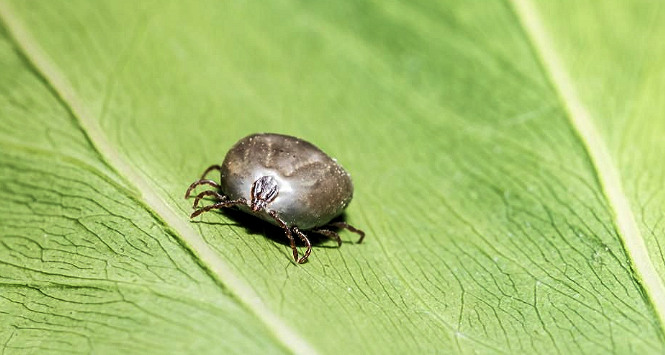The Backcountry Press
The country's premier daily hunting, fishing & outdoor news in the USA, Canada and more. Read whats happening in your neck of the woods & beyond. Choose your language above and read our news in English, Deutsche, Espanol, Francese, Irish or Italiano
The Backcountry Outdoor News reports the latest hunting and, fishing news along with fishing derbies and tournaments
from:
| ||||||
| ||||||
|
HUNTING NEWS CATEGORIES
© 2010 Backcountry Press Outdoor News - All Rights Reserved Website Design by:
Connect With Us
 | ||||
Asian Longhorned Tick Spreading Widely in U.S.
Submitted by: Backcountry Press Outdoor News
Posted on: 12/04/18
News # 12065
Disclaimer: The views expressed on this site are that of the authors and not necessarily that of TBC Press
In contrast to most tick species, a single female tick can reproduce offspring (1-2,000 eggs at a time) without mating. As a result, hundreds to thousands of ticks can be found on a single animal, person, or in the environment. Livestock producers and pet owners should work with their veterinarians to maintain regular tick prevention and report any unknown tick species to their local department of agriculture.
In other parts of the world where the Asian longhorned tick is common, it is a serious threat to livestock. In some regions of New Zealand and Australia, this tick can reduce production in dairy cattle by 25 percent.
CDC and its partners work to learn more, prevent spread of disease
To better understand the full potential impact of this tick discovery in the United States, CDC is working with a network of federal, state, and local experts representing veterinary and agricultural science and public health.
Protect against tickborne diseases - Everyone can take steps to prevent tick bites:
- Use Environmental Protection Agency (EPA)-registered insect repellents containing DEET, picaridin, IR3535, oil of lemon eucalyptus (OLE), para-menthane-diol (PMD), or 2-undecanone. Always follow product instructions.
- Treat clothing and gear with products containing 0.5 percent permethrin. Permethrin can be used to treat boots, clothing, and camping gear and remain protective through several washings. Alternatively, you can buy permethrin-treated clothing and gear.
- Check your body and clothing for ticks upon return from potentially tick-infested areas, including your own backyard. Use a hand-held or full-length mirror to view all parts of your body. Place tick-infested clothes in a dryer on high heat for at least 10 minutes to kill ticks on dry clothing after you come indoors.
- Shower soon after being outdoors. Showering within two hours of coming indoors has been shown to reduce your risk of getting Lyme disease and may be effective in reducing the risk of other tickborne diseases. Showering may help wash off unattached ticks and is a good time to do a tick check.
- Talk to your veterinarian about tickborne diseases in your area and prevention products for your dog.
For more information see; https://www.cdc.gov/media/releases/2018/p1129-tick-spreading-widely.html
Stock Image
# # # #
“In other parts of the world, the Asian longhorned tick can transmit many types of pathogens common in the United States. We are concerned that this tick, which can cause massive infestations on animals, on people, and in the environment, is spreading in the United States.”
New Jersey and eight other states report finding this tick
New Jersey was the first state to report the tick on a sheep in August 2017. Since then, 45 counties or county equivalents in New Jersey and eight other states—Arkansas, Connecticut, Maryland, North Carolina, New York, Pennsylvania, Virginia, and West Virginia—have reported finding the tick on a variety of hosts, including people, wildlife, domestic animals, and in environmental samples.
The Centers for Disease Control and Prevention is working with public health, agricultural, and academic experts to understand the possible threat posed by the spread of the Asian longhorned tick (Haemaphysalis longicornis) in several U.S. states.
“The full public health and agricultural impact of this tick discovery and spread is unknown,” said Ben Beard, Ph.D., deputy director of CDC’s Division of Vector-Borne Diseases.














